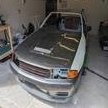Rebuilt R32gtr Gearbox Suit Rwd
Announcements
-
Similar Content
-
Latest Posts
-
I found it easiest to get rid of the engine that needed the smaller pulley and dropped in a whole Neo. The new PS pump comes with the engine. Deleting the HICAS lines is easier with the engine out too! :p
-
By Dose Pipe Sutututu · Posted
Great read about manifold design, twin scroll with the division all the way to the wastegate seat/fire ring https://www.facebook.com/story.php?story_fbid=1088497013319763&id=100064784224104 This is why I bought a Sinco manifold for my shit box and not a 6Boost due to wastegate design. -
Nissan Navara D40. I bought one a few weeks ago and its the one that FPG use in their power steering kit
-
If you get a 33 pump, bracket and harmonic balancer that will bolt straight up
-






Recommended Posts
Create an account or sign in to comment
You need to be a member in order to leave a comment
Create an account
Sign up for a new account in our community. It's easy!
Register a new accountSign in
Already have an account? Sign in here.
Sign In Now